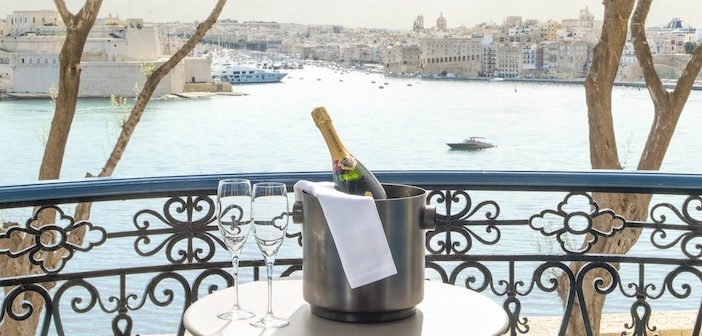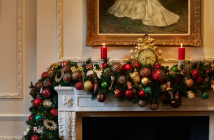Behind baroque façades and painted cupolas, Estella Shardlow discovers a world of rooftop fine dining, subterranean spas, and the evolution of luxury in Malta’s storied capital…
Malta is changing. Stand on the limestone bastions anywhere in Valleta harbour, looking north to Sliema or south to the Three Cities, and you’ll see cranes rising above the golden fortresses and belltowers. Sleek contours of glass and steel have enfolded Floriana’s 17th-century fortress to form the October-launched, 16,000sqft contemporary arts space MICAS. The population of this tiny island-nation (technically, a trio of islands) swelled 30% over the past decade, enticing ex-pats not only with its Mediterranean climate (hello, 300 days of sunshine) and multilingualism (English is spoken everywhere), but also a booming digital-nomad scene, blockbuster filming location and erstwhile golden visa scheme.
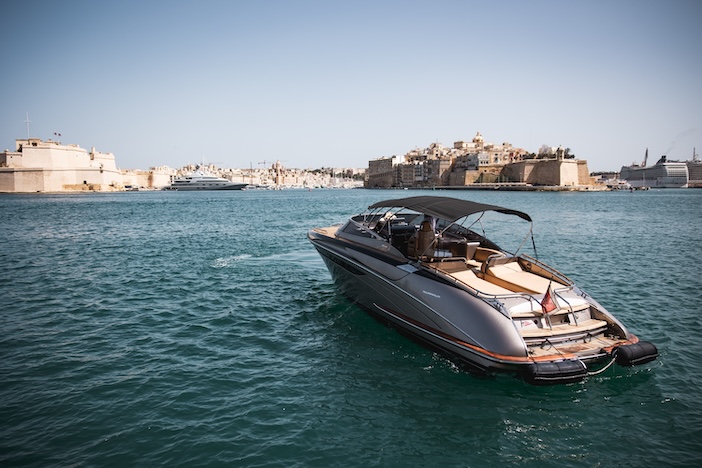
There’s the sense of a frontier island – an EU member, merely 180 nautical miles from Tunisia – boldly embracing its next chapter, in the latest incarnation of its centuries-old role as trade hub and strategic outpost. Only instead of naval forces, and European nobles sending their second sons to train as knights in the Order of St John, now it’s software designers, set-jetters and crypto bros who are pitching up on these rocky shores.
The winds of change can be felt in tourism, too. A package holiday stalwart, Malta’s latterly been vying for the attention of gourmand luxury travellers. Before 2020, the country had zero Michelin-starred eateries; now there are seven. Nowhere sums up the repositioning quite as well as Iniala Harbour House. The 23-room property has serious curb appeal: there’s same honeyed stone as its old-quarter neighbours, but its Maltese balconies and window shutters are freshly painted a sophisticated teal shade, suggesting this isn’t your average townhouse.
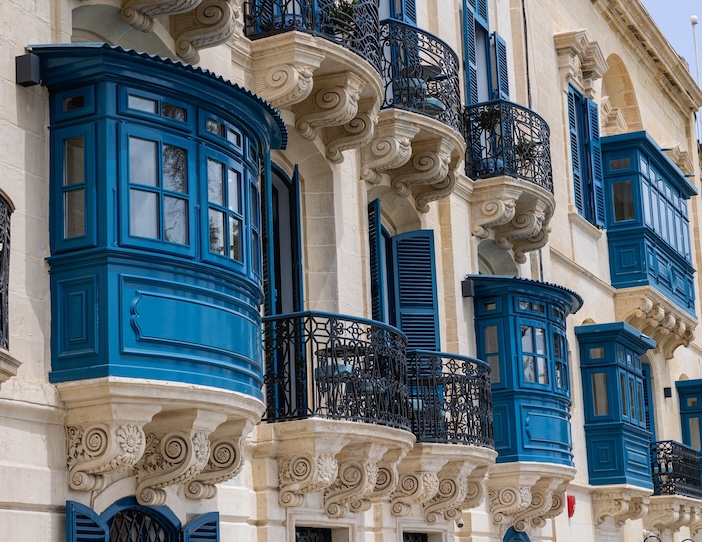
In fact, it’s four townhouses combined. Each was kitted out by a different international design studio, prohibited from structurally altering the original 1600s architecture. This makes for an idiosyncratic layout and individually designed spaces, sure to please boutique hotel lovers, rather than those who covet cookie-cutter resorts. Vaulted, cave-like lower levels, including the former wine cellars, now house a bijou lobby, cocktail bar, subterranean spa and swimming pool. It’s an artful mix of old new – take the grand stairwell, where a contemporary chandelier’s spidery squiggle of wires and bulbs is suspended from an ornately painted original cupola.
With 16 different room categories, no less, guests could opt for the Zen neutrals of Iniala Modern or splash out on The Grand Residence’s palatial pieds-a-terre with a private plunge pool overlooking one of the world’s largest natural harbours.

My City View Suite may have lacked those watery panoramas, but a ‘wow’ moment instead came from the cavernous bathroom, the basin alone (a reclaimed hunk of liturgical-looking marble) deserving its own Instagram post. High ceilings, heated floors, hand-stitched leather headboards and walk-in wardrobe with Hollywood starlet-worthy dressing table all dialled up the sumptuousness, not to mention the freestanding bar unit (nothing ‘mini’ about it).
Fabric wall murals depicting Valletta’s skyline brought that all-important sense of place. This anchoring in locality through architecture and art is a hallmark of its sister property Iniala Beach House in Phuket, too, as is the hospitality group’s philanthropic side, with a dedicated foundation putting hotel profits into charitable projects (in Malta, this includes social impact TV programme Changemakers).
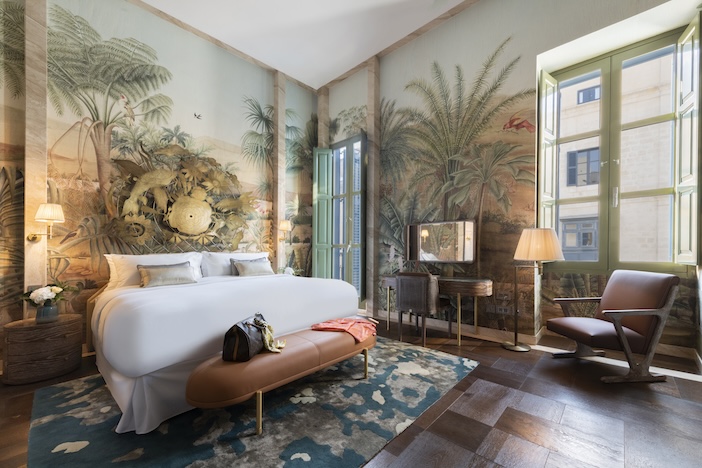
Hats off to Iniala for getting me to finally use a hotel gym for the first time ever. I’ve always thought indoor exercise a poor use of one’s travel time, when you could be exploring a new place. However, hotel health clubs rarely boast their own reformer Pilates machine. This snazzy bit of kit, plus the gorgeous terrazzo showers, tempted me into The Works Iniala, just across the road from the hotel proper.
A workout was a wise choice, given the 12-course feast I went onto savour beneath a bright full moon at ION Harbour, the hotel’s fourth-floor rooftop restaurant. As Malta’s only two Michelin star restaurant, helmed by Chef Simon Rogan, expectations were high. Frankly, they had me at ‘champagne trolley’, the sommelier patiently supporting my decision anxiety between a Billecart-Salmon and Dom Perignon, but his enthusiasm was unwavering right through to the colossal bottle of Maltese port he matched with my dessert.
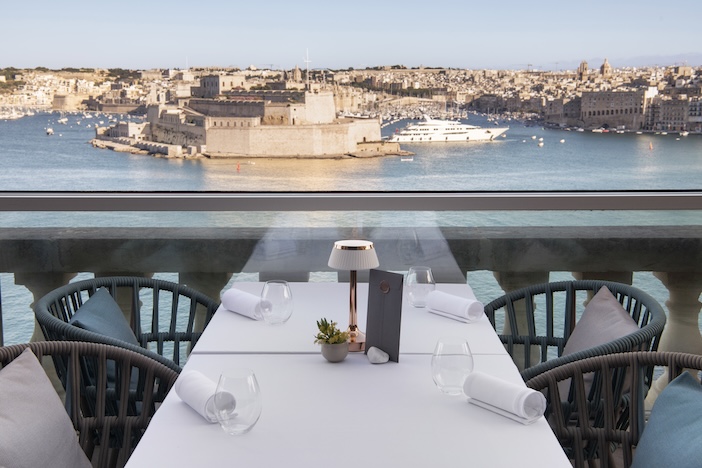
As for the food, Rogan’s hyperlocal ethos translates superbly to these shores. ION’s menu respectfully calls out individual Maltese farmer-collaborators, and for all the chef-y techniques and complexity those two stars denote, each humble ingredient is still allowed to sing – like a boltardy beetroot, aerated and salt baked, as an earthy partner to ember-smoked amberjack. Dishes toying with sweet-savoury contrasts were also a thrill, like a caramelised Jerusalem artichoke cornet with coffee molasses, or juicy Siġġiewi strawberries with buckwheat custard, anise and frozen buttermilk.
Apparently, the late Queen Elizabeth II spent her happiest days in Malta, a pre-Coronation playground for the young royal while Philip was stationed here as a naval officer. She stayed in a private palazzo, Villa Guardamangia (now a museum). Fast-forward 70-odd years, though, and I wager she might have deigned this rooftop restaurant worthy of an incognito visit. With its increasingly starry dining scene and sumptuous new stays like Iniala, the island-nation is fit for a queen once again.
Room rates at Iniala Harbour House Malta start from €400 (£341) per night for a double room on a B&B basis. For more information, please visit inialamalta.com.

